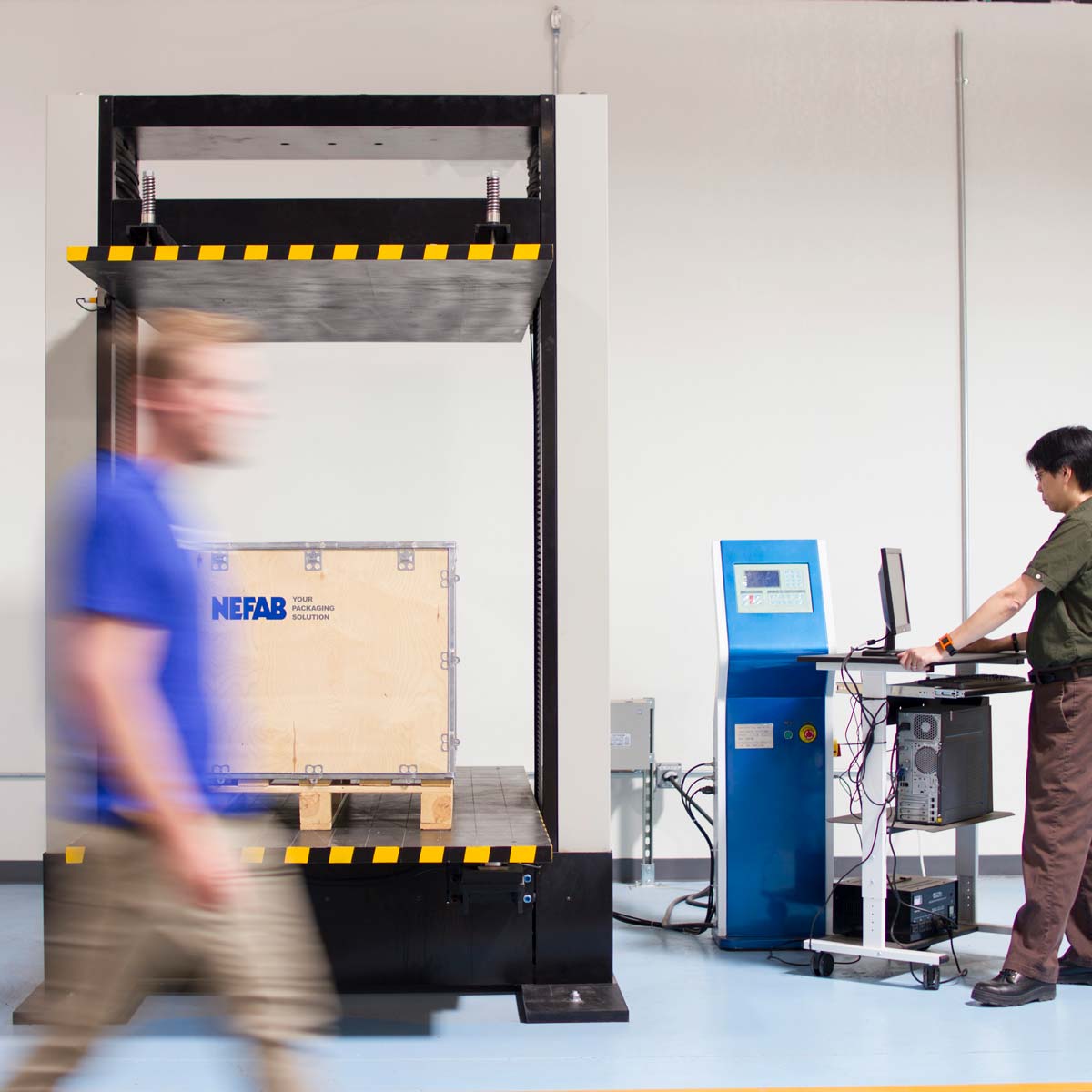If you’re looking to get your lithium-ion battery packaging approved by your national competent authority , you want to maximize your odds of getting certified. The best way to do this is to perform internal testing on your packaging before you go through the official certification process. In this blog, we describe the mandatory tests within the certification process, what the goals of the tests are, and what the testing criteria entail.
How to shape your internal lithium-ion battery packaging testing process
For internal testing, you can use the UN testing criteria as guidance, since they will be used by your national competent authority as well. In an ideal scenario, your internal tests are equal to the tests performed by the national competent authority.
A description of the test requirements and required performance of your packaging can be found in ADR 2017. The testing requirements vary some depending on the type of packaging and the content. In this blog, we will concentrate on testing of boxes for lithium batteries (solids). The testing applicable for boxes for batteries is differentiated for:
- Packaging: up to 400 kg net weight
- Large Packaging: over 400 kg net weight
To give you an idea of what you can expect, we describe the tests for both levels of packaging.
Tests for packaging — up to 400 kg net weight
The testing of packaging up to 400 kg net weight is performed in 4 steps:
- Identification of material
- Measuring of dimensions
- Drop test
- Stacking test
1. Identification of material
The first step entails a verification of all the materials that are described in the specification: is the sample box (for tests) built exactly like the specification details? This step is always performed before the actual test is conducted, because you want to make sure that it’s the exact right box that you’re testing. You want to determine if you’re working with the right kind of plywood or locking tongues, for instance.
2. Measuring of dimensions
The measuring of dimensions is performed on every test specimen. This way, an average value is determined for external dimension, volume, and weight. In the second step, a verification of the dimensions described in the specification is also performed. You want to make sure that the sample box is built according to the measurements detailed in the specification.
3. Drop test
The drop test is used to assess whether your LiB packaging can protect the battery during a drop from a certain height. The drop test for LiBs is divided into two packing groups with corresponding drop heights:
- Packing group I: 1.8 meter
- Packing group II: 1.2 meter
Based on your packaging type/material, a certain number of test samples has to be conducted. And 6 testing criteria for passing the test are required. The drop test is performed in 5 different directions:
- Dropping the box on the bottom
- Dropping box on the top
- Dropping box on the long side
- Dropping box on the short side
- Dropping box in a diagonal angle. This is the toughest test. The drop test often starts with the diagonal angle drop because if it fails, testing the other sides won’t be of any use.
It’s good to know that 5 different boxes may be used to test drops in each direction. The reason: a box may suffer damage from earlier drops, making it unable to withstand drops from another angle. And it’s highly unlikely that a packaging will fall in multiple directions during actual transportation.
Again, you can consult ADR 2017 for more details on the drop test.
4. Stacking test
The stacking test is used to test the stackability of your packaging. It’s also called a compression test. The stacking test is performed in a stacking rig and shall be equivalent to a height of at least 3 meters. The demand is 24 hours without breakage.
Three test samples per design type and manufacturer are required for all types of boxes. A test is successfully passed if the packaging does not leak, if there are no defects that could "adversely affect transport safety", reduce strength or "cause instability in stacks of packaging".

Tests for large packaging — over 400 kg net weight
1. Bottom lift test
The bottom lift test is meant for “all types of large packagings which are fitted with means of lifting from the base, as a design type test” . The test is performed by the box being lifted and lowered twice from each possible direction by a lift truck. When doing this, the forks shall be put in 3/4 of the depth of the packaging in the corresponding direction. The forks shall be placed centered and spaced by 3/4 of the dimension of the side of the entrance (or in fixed lifting positions if available). The passing criteria of the bottom lift test is that there is “no permanent deformation that renders the large packaging unsafe for carriage, and no loss of contents.”
2. Top lift test
In the top lift test process, the packaging gets loaded up to the extent that its certified gross weight gets doubled. After that, the packaging is suspended into a free hanging position for a period of 5 minutes. The passing criteria of the top lift test is that there is “ no permanent deformation which renders the large packaging, including the base pallet, if any, unsafe for carriage and no loss of contents”.
3. Stacking test
The stacking test for large packaging is for “all types of large packagings which are designed to be stacked on each other, as a design type test”. In this stacking test, it’s not the height that is the demand — but the number of packages you want to stack
on each other. You’re supposed to work with a safety margin of 1.8, meaning you are to take the weight from the numbers of boxes you want to stack on top of the box and then multiply that sum by 1,8. The result is the weight you are going to apply to the packaging for a period of 24 hours. The goal of the stacking test is to see if “all types of large packagings other than flexible large packagings: no permanent deformation which renders the large packaging including the base pallet, if any, unsafe for carriage and no loss of contents”.
4. Drop test
The drop test for large packaging is for “all types of large packagings as a design type test”. For large packaging, only one drop test is performed. The test should be done in a way that "the point of impact is that part of the base of the large packaging considered to be the most vulnerable". The criteria for passing the test are:
- “The large packaging shall not exhibit any damage liable to affect safety during carriage. There shall be no leakage of the filling substance from inner packaging(s) or article(s).”
- “The entire contents are retained even if the closure is no longer sift-proof.”
Internal lithium-ion battery packaging testing in practice
As you can see from ADR 2017, the testing and certification process of lithium-ion battery packaging is complex. Therefore, a reasonable question is: who should perform the internal testing process, and initiate the certification process at a national competent authority?
In theory, as a manufacturer, you can initiate these processes yourself. But logic dictates that you let your packaging supplier handle the process, since they already develop your packaging and should be in direct contact with a competent certification authority in your country.
If you’re curious to see how compliant and certified lithium-ion battery packaging was successfully developed, you can read this customer case. It describes how we helped a customer with organizing the shipment and return of lithium ion batteries to various distribution points on a global level. A main requirement from the customer was to be provided with safe distribution of their replacement batteries, but also the ability to switch the old battery with the replacement and send it back in the same box.
Take a look to see how we reduced this customer's cost of logistics with an efficient and compliant Lithium Ion Battery packaging solution — download the free case here:
Download the Lithium-ion Battery customer case
Find out how we reduced our customer's cost of logistics and environmental impact with an optimized and certified Lithium-ion Battery packaging solution
Download